- Home |
- Why With Us |
- About Us |
- Booking |
- Contact Us |
- Site Map


Everest- A Living Culture Exploration
15 days (ktm-ktm) Days from
The Everest region of Nepal is not only famous for mountains but is equally renowned for its ancient Sherpa culture. Any trip to this region without the opportunity for a culture experience / exploration would be rather incomplete. While the mountains are the obvious attraction, the area also offers many other sights and activities of attraction – mainly the culture tour of the region. There are many traditional villages scattered throughout the region and a leisurely stroll along these ancient communities with awesome mountain vistas in sight is something that any travelers to this region will find to be very unique.
| Max. Elevation : 3985m | Grade : Strenuous |
| Best season : Oct-Dec & Feb-May | Type of trek : Camping |
| Duration : 15 Days | Starting point : Lukla |
| Ending point : Kathmandu | Highlights : Nature |
The Everest region of Nepal is not only famous for mountains but is equally renowned for its ancient Sherpa culture. Any trip to this region without the opportunity for a culture experience / exploration would be rather incomplete. While the mountains are the obvious attraction, the area also offers many other sights and activities of attraction – mainly the culture tour of the region. There are many traditional villages scattered throughout the region and a leisurely stroll along these ancient communities with awesome mountain vistas in sight is something that any travelers to this region will find to be very unique.
The Khumbu region is largely inhibited by the famous Sherpa people who have earned reputation world over as skill mountaineers and are highly regarded as elite mountaineers and experts in their local terrain. The Sherpas migrated from the Kham region in eastern Tibet to Nepal within the last 300–400 years. The initial mountainous migration from Tibet was a search for beyul (Shangri-La). They primarily settled in the Solukhumbu district and then gradually moved further westward.
The Sherpas belong to the Nyingmapa sect of Tibetan Buddhism. Allegedly the oldest Buddhist sect in Tibet, it emphasizes mysticism and incorporates shamanistic practices and local deities shared by the pre-Buddhist Bon religion. Thus, in addition to Buddha and the great Buddhist divinities, the Sherpa also believe in numerous gods and demons who are believed to inhabit every mountain, cave, and forest. These have to be worshiped or appeased through ancient practices that have been woven into the fabric of Buddhist ritual life. Because of this belief
An important aspect of Sherpa religion is the monastery or gompa. There are some two dozen of these institutions scattered through the Solu-Khumbu region. They are communities of lamas or monks (sometimes of nuns) who take a vow of celibacy and lead a life in isolation searching for truth and religious enlightenment. They are respected by and supported by the community at large. Their contact with the outside world is limited to the annual festivals to which the public is invited, and the reading of sacred texts at funerals.
The trek is a great introduction to those wishing for cultural insights into the Sherpa version of Buddhism. The trek passes through the verdant alpine forest and wildlife, raging glacial rivers and waterfalls, stony trails, mountains, and Buddhist monasteries. If you happen to arrive at the season of Mani Rimdu Festival, you will also witness the Buddhist dance spectacle presented each year in the Khumbu region by the monks of Tengboche Monastery.
This culture exploration trek begins from Lukla Airport, the gateway of the Everest region from where we take steep ascent to Namche Bazaar, the capital of Sherpas people, where we are greeted by spectacular mountain vistas. We enjoy the Sherpa village, its culture and monasteries, the mountaineers and wild life museums. From Namche, we head toward Thame, a rather less visited but an exotic Sherpa settlement. Then we discover the Khumjung Valley. From Khumjung via Phortse, Pangboche and Tengboche, we complete our loop at Namche again. Trek back to Lukla for a return flight to Kathmandu.
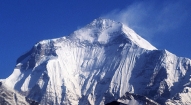
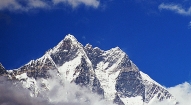
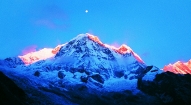
Day 01: Arrive Kathmandu International Airport- T I A (1300m) and transfer to hotel.
Day 02: After breakfast we set out for an extensive guided sightseeing tour of Kathmandu valley’s cultural, historical, religious and (world heritage) sites. During the course, we visit the famous Pashupatinath temple of Lord Shiva situated at the holy bank of River Bagmati where we will also observe the Hindu cremation ritual. We then proceed to the Boudhanath stupa, a major pilgrimage centre for the Buddhist faith which also is the largest of its kind in the world. We then have a short break for lunch followed by a visit to Swoyambhunath stupa also known as the Monkey Temple from where we can have a bird’s eye view of whole of Kathmandu valley. Following this we then proceed for a visit to Kathmandu Durbar Square, the oldest royal palace of Kathmandu and a UNESCO world heritage site. The whole are of Kathmandu Durbar Square is dotted with numerous fascinating Nepalese architect dating back many centuries. The site is also the home to Nepal’s living Goddess – Kumari, where we will also have the opportunity to experience firsthand this unique Nepali tradition. In the evening we will attend the welcome dinner hosted by Makalu Adventure with live Nepalese culture shows.
Day 03: Kathmandu ( 1310m) - Lukla (2827m) - Phakding (2652m) 5 hours
After a very early start, and an early take off from Kathmandu Domestic Airport, a 45 minute flight is all it takes to propel us into the Everest region of Nepal. The landing at Lukla (2800m) is spectacular and on arrival we are greeted by our sirdar and trekking crew who organise the luggage and hustle us off for tea. After a leisurely lunch we start the trek in earnest, setting off for a gentle walk to Phakding (2800m), a further 3 hours to the north. The trail leads through Lukla, past hotels, shops and airline offices to the edge of the Lukla plateauwhere the trail drops to meet the intersection of the Jiri trail at Chablung. From here the trail follows the Dudh Kosi north through the village of Ghat and then finally to Phakding where we spend the night.
Day 04: Phakding - Namche Bazar (3440m) 7 hours
From Phakding we cross the river and head up to the valley. The trail keeps close to the river valley and is lined with beautiful blue pine and rhododedron forest atht is very spectacular in the spring months when the flowers are in bloom. We cross the Dudh Kosi at Benkar where there are tantalizing glimpses of the snow peaks Kusum Kanguru (6369m) and Thamserku (6623m). From here it is only a short walk to Monjo (2835m) where we arrive in time for lunch and where the trail officially enters the Sagarmatha National Park boundry. There is an entrance station just beyond the village where trekking permits are checked and National Park fees collected. After lunch at Monjo, we continue along the trail, crossing the Bhote Kosi River to begin the steep climb up to Namche Bazaar 3500m., the administrative center of the Sagarmatha National Park and the hub of Sherpa society. Remember to look out for glimpses of Mt. Everest from the trail on the way to Everest! Overnight at the Camp or Lodge.
Day 05: Rest and acclimatization in Namche Bazaar
This is the scheduled acclimatization' day for this trek. Health experts always recommend us to stay active and moving during the rest day too instead of being idle. We either spend the day taking a day hike to Thame or visiting Khunde or relaxing and exploring Namche Bazaar itself. Namche Bazzar is the main centre of the Everest (Khumbu) region and has government offices, ATMs, Internet cafes, shops, restaurants, a bakery and a colorful market each Friday evening and Saturday. If we trek a few hundred vertical feet during the day, it will help us to properly acclimatize. Our guides will take us to the Tourist Visitor Center near the headquarter of the Sagarmatha National Park where we can observe an assortment of things related to the first Everest ascenders, Sherpa culture and learn about the various plant and animal life of the Everest region.
Day 06: Trek to Thame (3736m): 5/6 hrs
After breakfast we come out of Namche Bazar east past the monastery and begin with a short uphill trek. On the left we have the Kongde Ri (6187 m) and the river that flows down into a ravine. On the right is the rocky Khumbi Yul La (5765 m) and behind us is clearly visible on Kusum Kanguru (6,373 m). After an hour mostly downhill into the forest, the trip continues: the steep rise of about 50 m in altitude to reach a ridge around it. The river bed becomes closer and wider. We reach the village of Phorte and then the small town of Samde. Along stretch halfway up a slight slope leading to the bridge over the Bhote Koshi (3650 m). Cross it and about a half hour climb brings us to Thame.
Day 07: Trek to Khumjung (3786m): 5 hrs
Today, we trek to Khumjung from Thame. Climb up to the famous airstrip at Syangboche. Just above the airstrip is the Everest View Hotel, a Japanese scheme to build a deluxe hotel with great views of the highest mountains on Earth. The Khumjung valley is surrounded by the snowy peaks of Kongde and Thamserku and the scared peak Khumbila, hosts a well known monastery that houses a yeti scalp. We also visit Hillary School which is at the same site. After having lunch and spending some time in Khumjung, We make today's overnight stay at Khunde.
Day 08: Trek to Phortse (3542m): 5 hours
From Khumjung we hike to Phortse. Cross the lower slopes of Khumbila. Enjoy the mesmerizing views of Phortse, Cholatse and Taboche Also enjoy the views of Ama Dablam, Thamserku and Kangtanga among others. Phortse village lies in the Khumbu area south of Mount Everest, off the main trekking routes.
Day 09: Trek to Pangboche (3985m): 4/5 hrs
We started with a hard but short climb and then moved steadily along a ridge to Pangboche. Visit the Pangboche Gomba, see the footprint of the Lama Sangwa Dorje. The houses of Pangboche nestle above the terraced fields, such as a large crescent moon in a semicircle on the slope. This is typical Sherpa villages and Namche Bazar's exactly the same location. On both sides of the village attracts around a sacred grove and surrounded it like a picture frame to the village.
Day 10: Trek to Tengboche (3864m): 2 hrs
From Pangboche, we head eastward and join the Everest Base Camp main train. Then we descend to Tengboche. On the way, keep enjoying close up views of Ama-Dablam, Nuptse, and Everest. The Tengoche Monastery is the biggest Buddhist monastery all over in Khumbu region. Visit the monastery to witness the ceremony in the principal and popular monastery of Everest region.
Day 11: Trek to Namche (3450m): 5-6 hrs
From Tengboche, we further trek down through the hillside blanketed by rhododendron and juniper trees. After crossing the prayer flag festooned bridge over the Dudh Koshi River trail then follows the Dudh Koshi gorge descending rapidly through the pine forests. The path eventually reaches Sansa which is the major trail junction in the region. The trail to Namche Bazaar clings to the steep wooded slope beyond Kyangjuma, winding through several bends. After passing a Chorten, we reach the army camp at of Namche Bazaar. On reaching our lodge, we take a nice hot shower and have very relaxed sleep in our room in Namche Bazaar.
Day 12: Namche Bazaar to Lukla (2,800m): 6-7 hrs
From Namche, the trail descends steeply downward so we need to walk slowly and under control. After crossing the suspension bridges over the fast flowing Dudh Koshi and its tributaries the trail becomes more level and natural. Although we are travelling the same route down, we feel completely different views. We snap a mixture of open plains, rhododendron and pine forests, and in the distance snow covered peaks. We walk through the Sherpa villages' noticing impressive faith in Buddhism and culture of prayer stones and prayers flag while we walk through the villages. On arrival in Lukla, we stretch those sore legs and recall the experiences of the great Himalayan walk.
Day 13: Flight to Kathmandu
We fly back to Kathmandu after our cultural adventure into the Himalayas. The early morning flight drops us at Kathmandu. You can rest and relax throughout the day in your hotel, or if you would like you can shop around the Kathmandu high streets and buy things or souvenirs you would like to bring back home.
Day 14: After breakfast we will set out for a sightseeing tour of Bhaktapur and Patan and return to our hotel at late afternoon followed by farewell dinner in the evening.
Day 15: Final departure
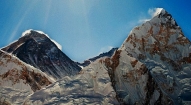
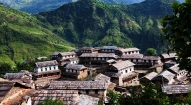
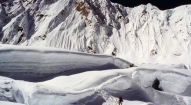
- All ground transfer by private vehicles as per our itinerary
- Fine hotel –Thamel Eco Resort in Kathmandu (twin sharing including b/f and taxes)
- Welcome dinner with live Nepalese cultural program hosted by Makalu Adventure
- Guided sightseeing around Kathmandu world heritage sites including all entrance fees
- All domestic airfares (Kathmandu-Lukla- Kathmandu)
- Full board meals and accommodation during the trek.
- National park, conservation area permits and fees (wherever applicable).
- Guide, porters, their daily wages, insurances with all necessary lodging / fooding arrangements.
- Administration service during rescue and evacuation (if required)
- Down jacket, sleeping bags, Trekking kit bag/duffel bag, trekking map and trekking Poles
- A comprehensive medical kit
- All government and local taxes
- Nepal visa fee.
- Airport taxes.
- International airfare to and from Kathmandu.
- Excess baggage charges.
- Lunch and evening meals in Kathmandu.
- Extra night accommodation.
- Travel and rescue insurance.
- Personal expenses (phone calls, laundry, bar bills, battery recharge, extra porters, bottle or boiled water, showers etc).
- Rescue and evacuation, if required.
- Tips and gratitude





